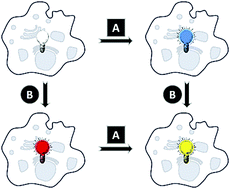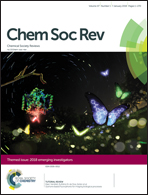Fluorescent probes for the simultaneous detection of multiple analytes in biology
Abstract
Many of the key questions facing cellular biology concern the location and concentration of chemical species, from signalling molecules to metabolites to exogenous toxins. Fluorescent sensors (probes) have revolutionised the understanding of biological systems through their exquisite sensitivity to specific analytes. Probe design has focussed on selective sensors for individual analytes, but many of the most pertinent biological questions are related to the interaction of more than one chemical species. While it is possible to simultaneously use multiple sensors for such applications, data interpretation will be confounded by the fact that sensors will have different uptake, localisation and metabolism profiles. An alternative solution is to instead use a single probe that responds to two analytes, termed a dual-responsive probe. Recent progress in this field has yielded exciting probes, some of which have demonstrated biological application. Here we review work that has been carried out to date, and suggest future research directions that will harness the considerable potential of dual-responsive fluorescent probes.

- This article is part of the themed collections: Probes for in vitro and in vivo fluorescence imaging and 2018 Emerging Investigators


 Please wait while we load your content...
Please wait while we load your content...